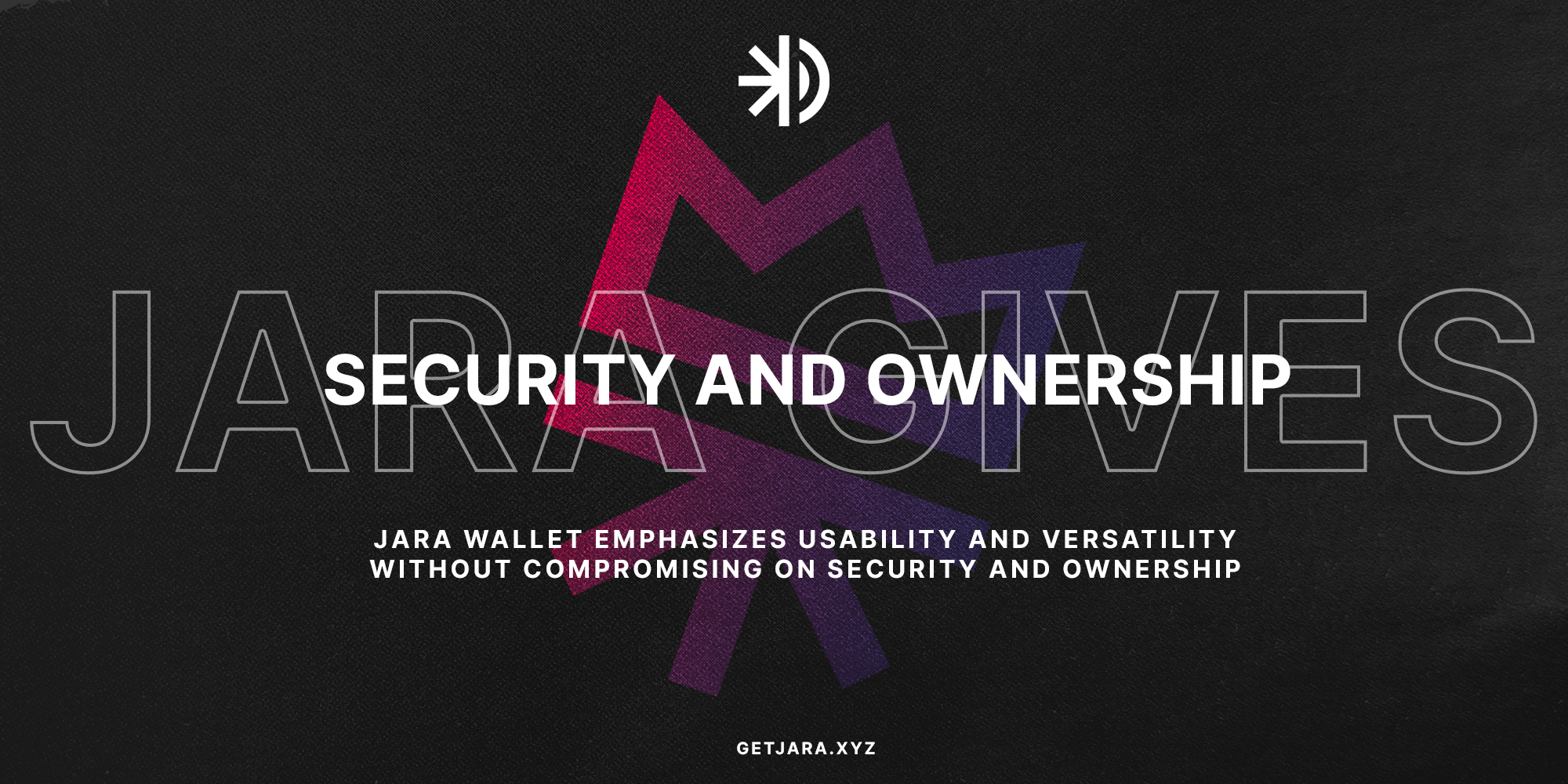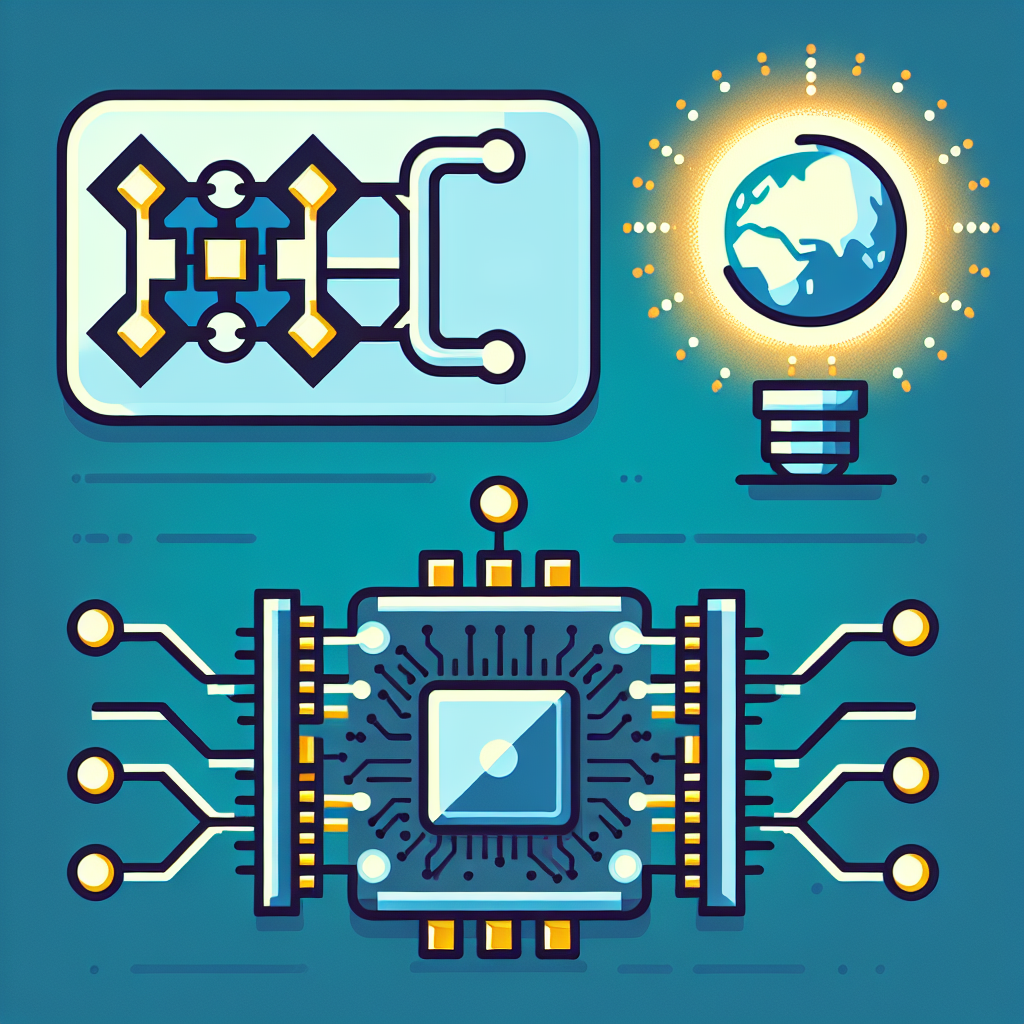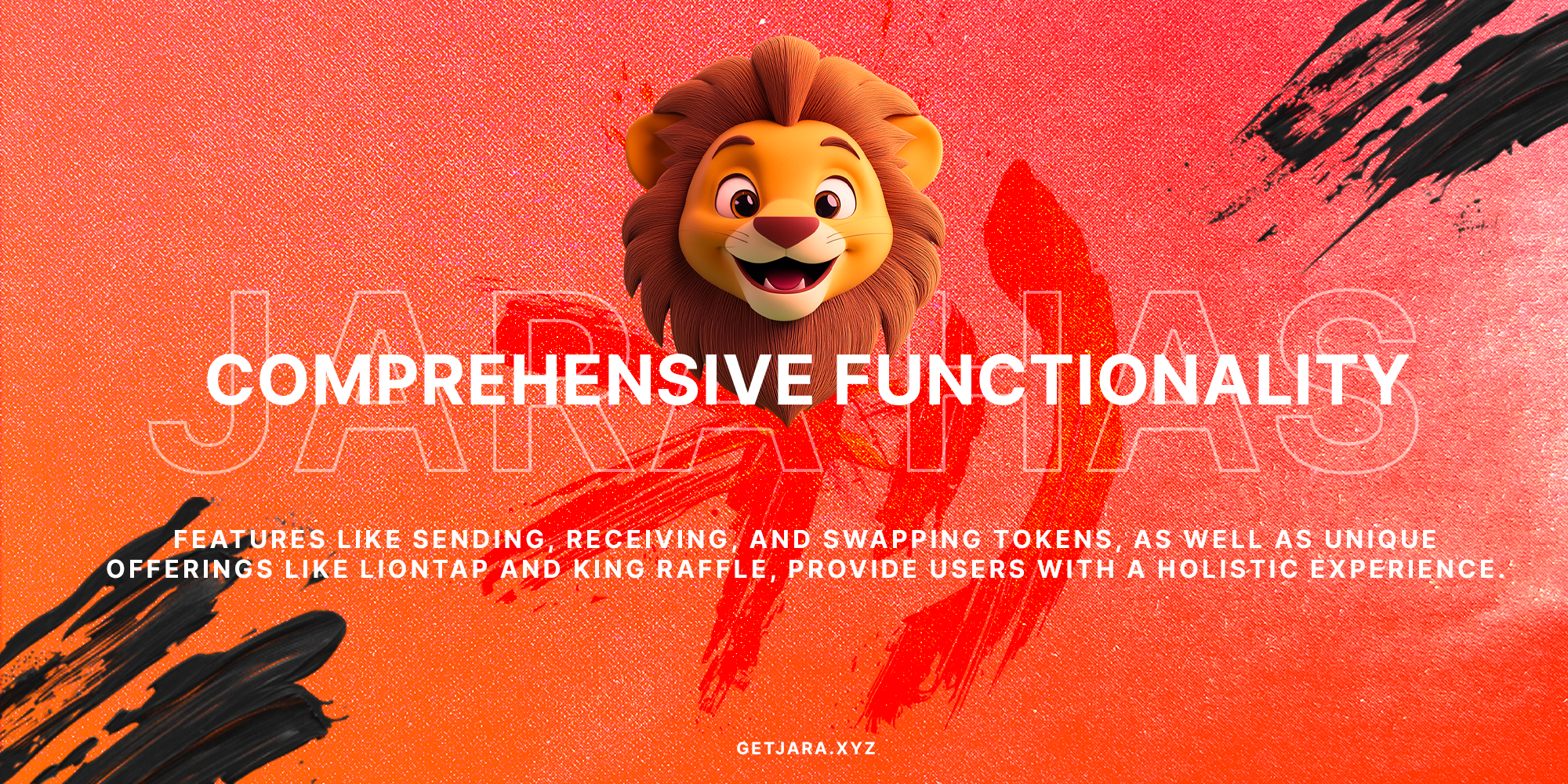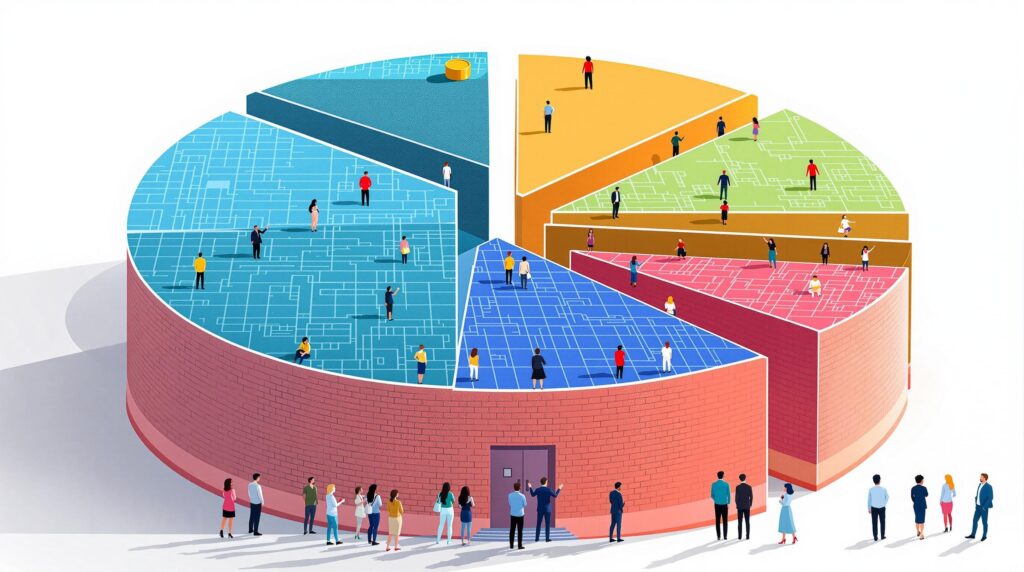Understanding Layer 1 Blockchains
Layer 1 blockchains form the primary structure of the blockchain ecosystem. They serve as the foundational network where transactions are validated and finalized, providing the infrastructural base for decentralized applications (dApps) and protocols. Bitcoin and Ethereum are quintessential examples of Layer 1 blockchains, supporting decentralization and security through robust consensus mechanisms.
What is a Layer 1 Blockchain? A Layer 1 blockchain is the primary network of a blockchain ecosystem, functioning as the base layer where transactions are validated, ensuring security and decentralization.
Imagine a complex highway system. The roads symbolize Layer 1 blockchains as they facilitate the movement of vehicles (data and transactions) from one point to another efficiently. These highways have the crucial task of maintaining smooth traffic flow, implementing rules, and ensuring safety without centralized oversight, which makes them indispensable for the seamless operation of the blockchain ecosystem.
The Role and Importance of Layer 1 Blockchains
Layer 1 blockchains aren’t just about maintaining transactions; they’re about establishing trust. These foundational blocks offer high levels of security and decentralization by employing consensus mechanisms such as Proof of Work (PoW) and Proof of Stake (PoS). They ensure each transaction is verified and tamper-proof, echoing the need for reliability much like a bank may offer to its customers.
- Decentralization: Unlike centralized systems, Layer 1 blockchains distribute control across numerous nodes, reducing risks associated with single points of failure.
- Security: The consensus mechanisms protect the network against malicious attacks, such as double-spending or fraud.
- Scalability: Even though Layer 1s face scalability issues, their role as the backbone ensures further layers can build on them, much like adding extra lanes on a road to handle more traffic.
As you venture deeper into understanding blockchain technology, it’s essential to recognize the unique advantages that Layer 1s bring to the table. They enable a plethora of applications, from facilitating rapid cross-border payments to powering secure and transparent financial systems.
Challenges Encountered by Layer 1 Blockchains
Despite their robust capabilities, Layer 1 blockchains encounter several challenges. A prominent issue is scalability. Although they provide immense security, the same stringent validation processes that make them secure may hinder their ability to process large volumes of transactions swiftly.
What scalability challenges do Layer 1 blockchains face? Layer 1 blockchains face challenges when scaling to support a high volume of transactions. Solutions like Layer 2 modifications help enhance scalability while maintaining the core layer’s security and decentralization.
Innovative solutions such as Layer 2 modifications serve as extensions that allow for more efficient transaction processing, illustrating the necessity of creating harmony within the complex blockchain symphony. This is akin to adding more efficient toll booths to manage increased traffic without compromising road safety.
Layer 1 Blockchains in Practice
Layer 1 blockchains underpin decentralized finance (DeFi) applications and smart contracts that revolutionize how financial transactions occur. Consider Bitcoin’s role in enabling trustless transactions or Ethereum’s aid in fostering a new world of scalable smart contracts – both serve as monumental shifts in financial paradigms.
- Bitcoin: Often regarded as digital gold, Bitcoin’s blockchain functions as a public ledger, facilitating direct peer-to-peer transactions without intermediary intervention.
- Ethereum: Known for its programmable blockchain, Ethereum allows developers to create custom decentralized applications (dApps), resulting in various DeFi solutions.
Understanding Layer 1 blockchains is crucial not just for those deeply embedded in the cryptocurrency field but also for individuals aiming to tap into new avenues of financial empowerment. Whether it’s enabling transparent transactions or smart agreements – this layer serves as the unseen force fueling innovation across the globe.
Challenges in Layer 1 Blockchains
Scalability and Security
Despite their foundational role in the blockchain ecosystem, Layer 1 blockchains face significant scalability challenges. One major issue is that every transaction must be validated by each node within the network. This requirement can slow down processing times, especially as the number of transactions increases, leading to higher costs. However, the decentralized nature of these blockchains is crucial for ensuring security. This decentralized system decreases risks associated with single points of failure, as witnessed in centralized systems like traditional financial networks.
What is the balance between scalability and security in Layer 1 blockchains? Layer 1 blockchains strive to find a balance between scalability, which involves efficient transaction processing, and security, which ensures decentralized and secure operations.
Layer 1 blockchains like Bitcoin and Ethereum are at the core of blockchain innovation due to their ability to maintain network integrity without a central authority. This integrity is achieved through their decentralized consensus mechanisms. However, scaling to support a growing number of users and transactions remains a formidable challenge.
- Transaction Throughput: The capacity to handle a high number of transactions is limited by the need for extensive validation processes.
- Cost Implications: Increased demand on the network can lead to higher transaction fees, which are often a deterrent for users.
- Security Assurance: By distributing control across numerous nodes, Layer 1 blockchains are inherently more secure, preventing tampering and reducing the impact of breaches.
Addressing these challenges is essential for the continued success and adoption of Layer 1 blockchain networks. Improving transaction throughput without compromising security can further enhance these systems’ utility and broaden their appeal beyond niche enthusiasts to mainstream users. Solutions like implementing sharding or transitioning to more efficient consensus mechanisms are actively being explored to bolster scalability while maintaining a strong focus on security.
By working to address these issues, cryptocurrencies and blockchain networks can become more appealing for widespread financial applications, facilitating everything from everyday transactions to complex financial instruments. The goal is to reach a level of efficiency and accessibility that matches or surpasses traditional systems while retaining unique advantages such as decentralization and security.

The Role of Layer 2 Solutions
Layer 2 solutions are designed to address the scalability constraints that often hinder the broader adoption of Layer 1 blockchains. These solutions function by offloading transactions from the main blockchain, allowing for faster processing and lower costs. But what exactly makes Layer 2 so crucial?
Why are Layer 2 solutions important? Layer 2 solutions are crucial because they enhance the scalability, speed, and efficiency of Layer 1 blockchains without compromising their security or decentralization.
Let’s take a look at the most notable Layer 2 solutions in the industry today:
- Bitcoin’s Lightning Network: This solution lets users conduct numerous transactions off-chain, with only the net results being recorded on the main Bitcoin blockchain. This dramatically reduces the time and cost of transactions.
- Ethereum’s Roll-ups: Roll-ups aggregate hundreds of transactions into a single bundle, which is then included in the main Ethereum chain. This approach increases throughput while keeping fees manageable.
Each of these methods plays a significant role in expanding the utility of their respective Layer 1 counterparts. While Layer 1 security remains uncompromised, Layer 2 solutions introduce improved usability, encouraging more users and applications to engage with blockchain technology.
Enhancing Blockchain Usability and Throughput
Beyond reducing costs and transaction times, Layer 2 solutions allow for a more practical implementation of blockchain technology in real-world scenarios. What this means is that industries like gaming, finance, and supply chain – all of which demand high transaction throughput and reliability – can now feasibly use blockchain systems.
Consider the fast-paced nature of the gaming industry where microtransactions are frequent. A robust, low-cost solution like Layer 2 is not merely beneficial but essential for ensuring that players can enjoy smooth gameplay without delays.
Understanding the impact: With Layer 2 solutions, blockchain can meet the demands of high-traffic applications, facilitating hundreds of thousands of transactions per second.
The Balance between Decentralization and Efficiency
While Layer 1 blockchains emphasize decentralization and security, Layer 2 introduces a nuanced balance by enhancing these systems’ scalability. But how do the two layers harmonize without compromising on foundational principles?
Layer 2 maintains the core tenets of blockchain technology—decentralization and security—through its reliance on Layer 1 for ultimate settlement and validation. This relationship ensures that even as transaction speeds and efficiencies increase, the overarching network integrity remains intact.
In this dynamic, Layer 2 effectively supports the transition of blockchain from a niche technology to a mainstream infrastructure.
If you’re curious about how these innovations shape industries, Jara is proving that Layer 2 isn’t just a tech evolution but a necessity in today’s rapidly digitizing world.
“Your Voice, Our Mission” – at Jara, we leverage Layer 2 technology to enhance transaction speeds and efficiency while ensuring the security and reliability of your digital interactions.
By understanding the unique capabilities of Layer 2 solutions, you can appreciate their indispensable role in the blockchain ecosystem, especially as demand for blockchain technology continues to rise. Whether it is upgrading financial models or managing extensive digital assets, Layer 2 solutions offer an economically viable pathway forward.
Interactions and Future Prospects
Layer 1 blockchains stand at the forefront of technological innovation, particularly when integrated with Layer 2 solutions. This combination offers potent capabilities to revolutionize major industries, such as finance, supply chain management, and AI governance. But how exactly do these layers interact, and what future prospects could they unlock?
What is the role of Layer 1 blockchains? Layer 1 blockchains serve as the foundational architecture for blockchain ecosystems, executing transactions, validating data, and ensuring security through decentralized consensus mechanisms.
Synergies between Layer 1 and Layer 2 Blockchains
Layer 1 blockchains, like Bitcoin and Ethereum, have a pivotal role as they authenticate transactions and uphold the network’s security. However, they often face scalability challenges, particularly as user demand grows. This is where Layer 2 comes into play. By offloading transactions from the main network and processing them off-chain before settling back on Layer 1, Layer 2 solutions drastically improve transaction speeds and reduce costs.
Consider the Lightning Network for Bitcoin, which facilitates faster transactions. It is a prime example of how Layer 2 solutions extend the capabilities of Layer 1, making blockchain technology more viable for mainstream use without compromising on security.
Transformative Application in Various Sectors
In the financial sector, Layer 1 blockchain platforms like Ethereum are enabling groundbreaking innovations in decentralized finance (DeFi). With DeFi, financial activities traditionally overseen by banks can occur directly between participants through smart contracts, offering greater accessibility and lower costs.
Moreover, Layer 1’s impact is profound in supply chain management. It provides a transparent, traceable system that ensures the authenticity of products. This could significantly reduce fraud, increase efficiency, and bolster consumer confidence, creating a more reliable logistics network globally.
“The fusion of Layer 1 and Layer 2 blockchains is the catalyst for unparalleled efficiency and scalability in applications across industries.”
Future Prospects: A Glimpse into Tomorrow
The intersection of blockchain with emerging technologies such as artificial intelligence (AI) and the Internet of Things (IoT) presents exciting prospects. For instance, incorporating AI with blockchain can enhance automated processes, increase transaction accuracy, and even introduce new levels of machine learning governance.
Additionally, Layer 1 blockchains are evolving to support more complex operations and higher throughputs. Innovations such as sharding and new consensus mechanisms promise to further improve performance and security. This technical evolution is pivotal for accommodating the increasing demands of digital economies.
In the near future, we might see Layer 1 blockchains facilitating more robust decentralized identity systems, providing unprecedented security and privacy enhancements. These advancements will likely fuel broader blockchain adoption and drive continuous innovation in both personal and enterprise applications.
Ultimately, Layer 1 blockchains, coupled with other advanced technologies, could redefine how data and transactions are managed worldwide, offering immense possibilities and empowering businesses and individuals alike.


Related Pages We Serve
Explore additional areas related to Layer 1 blockchains and discover how our expertise extends across these fields.
List of Top-Rated Blockchain Attorneys Serving Jara
Choosing the appropriate legal representation is crucial when navigating the complexities of Layer 1 and Layer 2 blockchain solutions. A seasoned attorney dedicated to blockchain solutions ensures you’re equipped to make informed choices at each phase of the process.
- John Doe – Expert in Crypto Regulations
- Jane Smith – Blockchain Patent Specialist
- Emily Zhang – Fintech Legal Advisor
- Michael Brown – Smart Contracts Innovator
Discover What Our Clients Are Saying
Our dedication to excellence in Layer 1 and Layer 2 blockchain solutions is evident in every case we undertake. The positive feedback from our clients is a testament to the hard work and dedication we consistently deliver.

Contact Us to Explore Blockchain Solutions
Ready to unlock the potential of blockchain technology? Our team at Jara offers expertise in both Layer 1 and Layer 2 blockchain solutions, ensuring scalable, secure, and innovative approaches tailored to your specific needs. Contact us at [email protected] or call us at 000-000-0000 to schedule your consultation.
“Your Future Starts With Us” – Join the revolution in blockchain technology with our expert guidance and support.
Awards Recognizing Our Blockchain Expertise
- Highlighted among “Top Blockchain Advisors 2023” by FinTech Innovators. Read More
- Listed as a leading firm in “Blockchain Solutions Providers 2023” by TechGlobal. Read More
- Recognized as a “Best Emerging Blockchain Firm 2023” by Crypto Insights. Read More
- Named among “Innovative Blockchain Projects 2023” by Digital Finance Awards. Read More
- Included in “Pioneers in Blockchain Technology 2023” by Industry Leaders. Read More
Chinyere “Chi” Nnadi Bio
Founder and CEO, Jara | Blockchain Innovation Specialist
Content reviewed by Chi Nnadi and his content team. Chi is an experienced entrepreneur dedicated to transforming Africa’s financial ecosystem through blockchain technology. As Founder and CEO of Jara, he builds enterprise-grade infrastructure converting illiquid African assets into globally accessible digital tokens. With his proprietary Layer-2 blockchain technology and expertise, Chi bridges the gap between global investors and Africa’s growing digital asset market.
Our Content Review Process
Chi Nnadi along with Jara’s dedicated content team, pledge to offer top-notch material. Our content guidelines ensure thoroughness, reputable sources, unbiased scrutiny, among other quality metrics. Please let us know if there is anything you believe to be inaccurate.

















